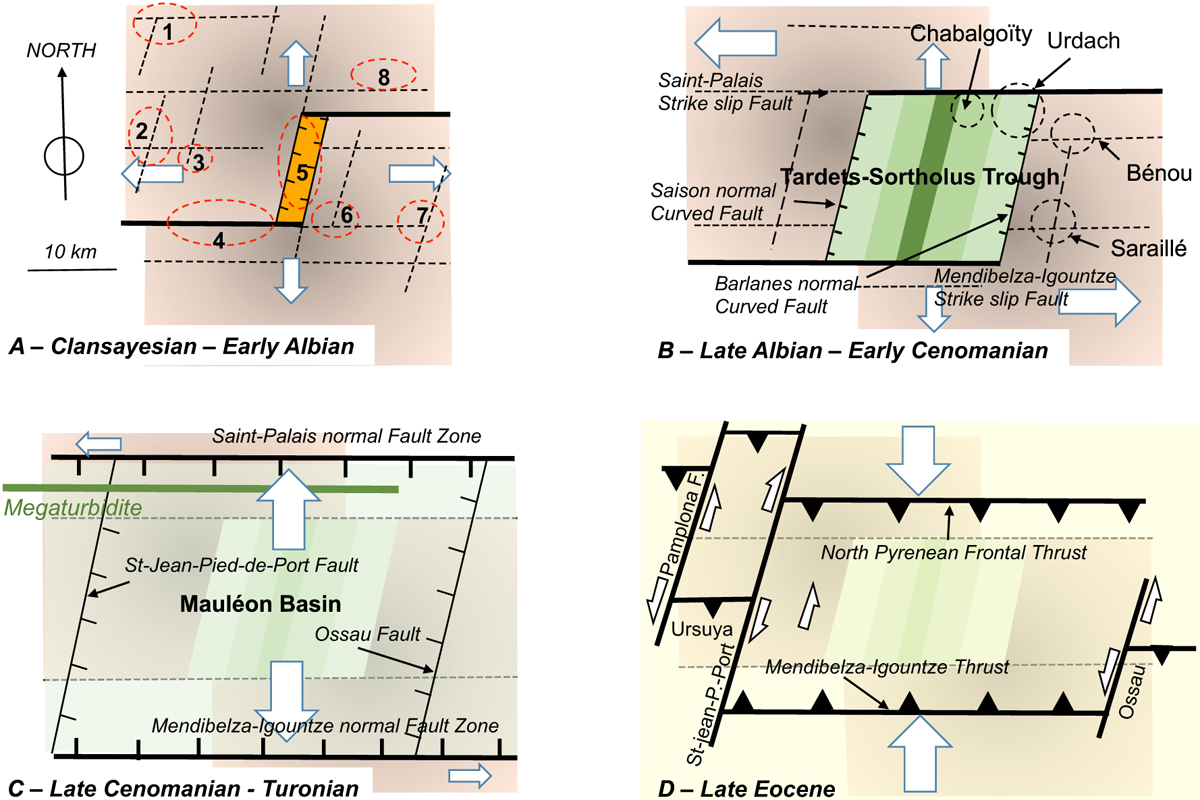Fig. 6

Download original image
Geodynamic evolution steps of the Mauléon Basin. A: Clansayesian (Uppermost Aptian) – Lower Albian: fracturing of the urgonian platform and major break down along the future Tardets Trough (orange color); starting of the West-Pyrenean diapiric process (1: Salies-de-Béarn; 2: Iholdy; 3: Arhansus; 4: Béloscare; 5: Saison complex; 6: Sarrance; 7: Lauriolle; 8: Lasseube). B : Upper Albian – Lower Cenomanian: creation of the Tardets-Sorholus Trough through W-E main counterclockwise strike slip inducing local extreme crust thinning and low N-S distension. Note the location of the transverse Saison and Barlanès listric faults and the present Chabalgoïty, Urdach, Bénou and Sarraillé outcropping mantle peridotites (black circles). C: Upper Cenomanian – Turonian: creation of the Mauléon Basin through widening of the Tardets-Sorholus Trough with dominant N-S extension and associated counterclockwise W-E strike slip weak motion. The sedimentary area increases laterally, both westward, beyond the Saint-Jean-Pied-de-Port fault to the Saint-Jean-de-Luz Basin and eastward, beyond the Ossau fault zone, to the eastern Bearn Basin. Note the development of the Turono-Coniacian Osquich Pass megaturbidite westward of the old Barlanès fault zone. D: Upper Eocene: Development through N-S compression of the pyrenean structures within the Mauléon Basin. The old Upper Cretaceous normal faults are reworked into E-W thrust faults (south verging in the southern Mendibelza-Igountze massifs and north verging in the northern North Pyrenean Frontal Thrust) and the old SW-NE transverse faults into dextral or anticlockwise strike slip faults. Note the strong northward offsetting of the Baygoura-Ursuya Massif along the transverse Pamplona Fault Zone.
Les statistiques affichées correspondent au cumul d'une part des vues des résumés de l'article et d'autre part des vues et téléchargements de l'article plein-texte (PDF, Full-HTML, ePub... selon les formats disponibles) sur la platefome Vision4Press.
Les statistiques sont disponibles avec un délai de 48 à 96 heures et sont mises à jour quotidiennement en semaine.
Le chargement des statistiques peut être long.




